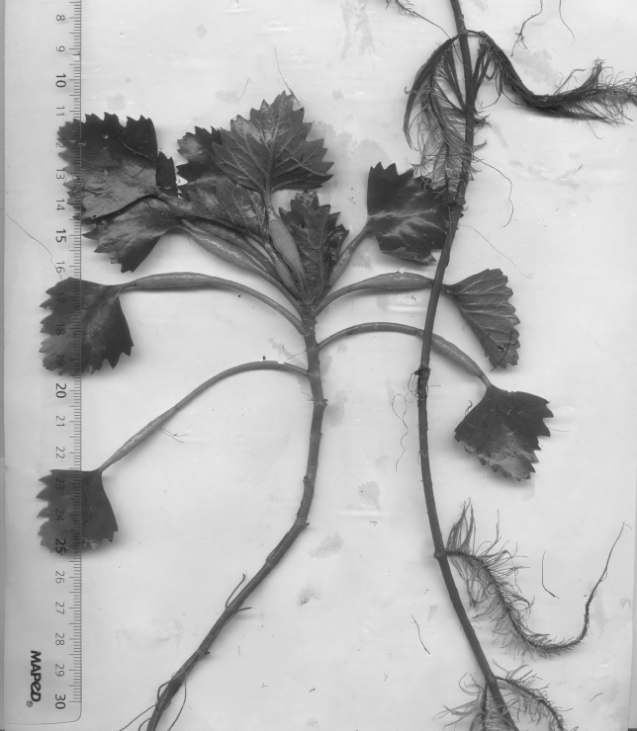Ultrastructurе of epidermal surface in floating and submerged leaves of Trapa natans L.
Abstract
Ultrastructure of epidermal surface of floating and submerged leaves of Trapa natans at vegetative phase was investigated. Heterophylly is character for this plant. The determine differences were established. The presence of stomata on upper epidermis and the presence of high cuticular combs along perimeter at each cell on lower epidermis were typical for floating leaves. Submerged leaves have not stomata, but cuticular combs and pore-like structures were revealed in abaxial surface. The contours of epidermal cells are indistinct because outer cell walls of epidermis are coated by solid cuticle layer.
References
Arber A.R. 2008. Water plants: A study of aquatic angiosperms. Cambr. Univ. Press, Cambridge.
Bercu R. 2004. Histoanatomy of the leaves of Trapa natans (Trapaceae). Phytol. Balcan. 10: 51‑55.
Carpenter K.J. 2006. Specialized structures in the leaf epidermis of basal angiosperms: morphology, distribution, and homology. Amer. J. Bot. 93: 665‑681.
Madsen T.V. & Maberty S.C. 1991. Diurnal variation in light and carbon limitation of photosynthesis by two species of submerged freshwater macrophytes with a differential ability to use bicarbonate. Freshwater Biol. 26: 175–187.
Mommer L., Pons T.L., Wolters-Arts M. et al. 2005. Submergence-induced morphological, anatomical, and biochemical responses in a terrestrial species affects gas diffusion resistance and photosynthetic performance. Plant Рhysiol. 139: 497–508.
Nedukha O.M. 2008. Constant water environment and peculiarity of leaf structure of some water plants. Zeszyty Problemowe Postepow Nauk Rolniczych (Warszawa). 524: 189–203.
Smith F.F. & Walker N.A. 1981. Photosynthesis by aquatic plants: effects of unstirred layers in relation to assimilation of СО2 and НСО3 and isotopic discrimination. New Phytol. 6: 245–259.
Vartapetian B. & Jackson M.B. 1997. Plant adaptation to anaerobic stress. Ann. Bot. 79 (Suppl. A): 3–20.


This work is licensed under a Creative Commons Attribution-NonCommercial-NoDerivatives 4.0 International License.
The journal is licensed by Creative Commons under BY-NC-ND license. You are welcome and free to share (copy and redistribute the material in any medium or format) all the published materials. You may not use the material for commercial purposes. You must give appropriate credit to all published materials.
The journal allow the author(s) to hold the copyrights and to retain publishing rights without any restrictions. This is also indicated at the bottom of each article.





